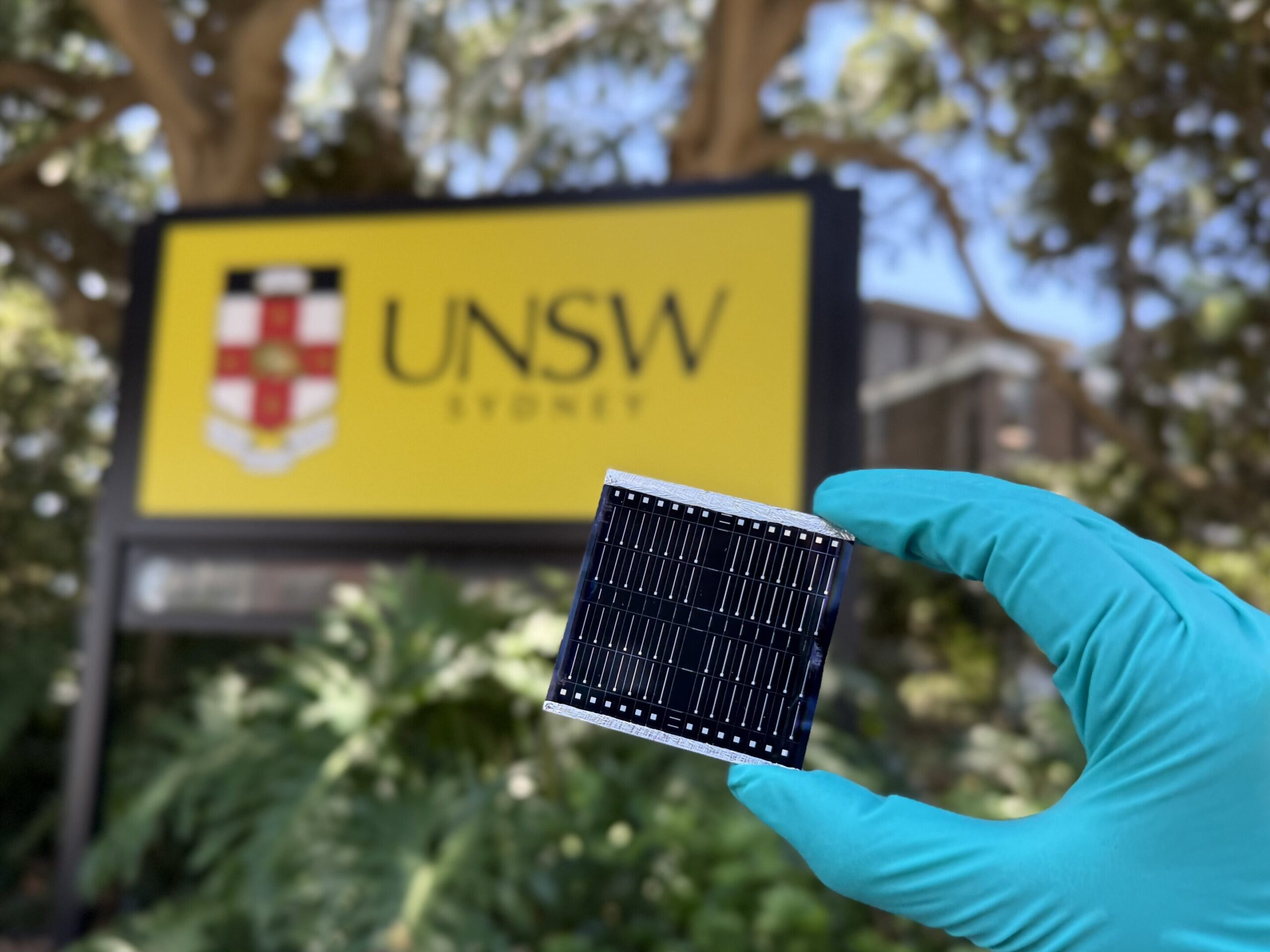Photovoltaics (PVs) are playing an increasingly significant role in global efforts to transition to cleaner, more sustainable energy sources. These devices, which convert sunlight into electricity, are gaining momentum as a solution to the world’s growing energy demands, with more and more people turning to solar technology to power their homes, businesses, and industries. As the demand for solar power continues to rise, researchers and engineers in the renewable energy sector are working tirelessly to identify materials and processes that can reduce the costs associated with solar technology while simultaneously improving the power-conversion efficiency (PCE) of photovoltaic cells.
A promising material that has garnered attention for the development of solar cells is kesterite Cu₂ZnSnS₄ (CZTS). This semiconductor material boasts a large energy bandgap, meaning it has the potential to absorb light more efficiently than traditional materials used in solar cells, such as silicon. Silicon has long been the standard material used in photovoltaic technology, but it comes with its own set of challenges, including relatively high production costs and the extraction of materials that are not always abundant or environmentally friendly. In contrast, CZTS is made of non-toxic, abundant elements that are readily available on Earth, making it a sustainable and potentially cost-effective alternative for solar cells.
While CZTS solar cells show great promise due to their environmental sustainability and material abundance, they have yet to surpass the performance of silicon-based solar cells in terms of efficiency. The highest efficiency recorded for CZTS-based solar cells to date is just 11%, which is a significant gap compared to silicon’s efficiency, which can reach 20% to 25% in commercial solar cells. This performance limitation is mainly attributed to a phenomenon known as carrier recombination. Carrier recombination occurs when photo-generated electrons and holes—the charge carriers created when sunlight hits the material—recombine before they can be captured to generate electricity. This process leads to a loss of potential energy and reduces the overall performance of the solar cell.
Hydrogen Annealing: A Promising Solution
In their ongoing efforts to improve the performance of CZTS solar cells, researchers at the University of New South Wales in Sydney, Australia, have explored a technique called hydrogen annealing as a potential solution to mitigate carrier recombination. Hydrogen annealing involves heating a material in an atmosphere containing hydrogen, which can help redistribute key elements within the material and passivate defects that hinder its performance. In the case of CZTS solar cells, hydrogen annealing has shown promise in enhancing carrier collection—the process of capturing photo-generated carriers and utilizing them to generate electricity.
The research team’s findings, which were published in the journal Nature Energy, suggest that hydrogen annealing can significantly improve the optical and electrical properties of CZTS solar cells. The technique works by redistributing sodium within the CZTS layers and passivating defects near the surface of the absorber. This process improves carrier transport and collection, two critical factors in achieving high-efficiency solar devices. According to Kaiwen Sun, senior author of the paper and researcher at the University of New South Wales, the work was driven by the need to find a low-cost, sustainable, and environmentally friendly material for next-generation solar cells.
“Our work was inspired by the need to identify a sustainable, low-cost, and environmentally friendly material for next-generation solar technologies,” Sun explained. “CZTS is a particularly promising candidate as the top cell in tandem solar cell architectures due to its tunable bandgap, stability, and use of earth-abundant, non-toxic elements. However, a key challenge has been improving this material’s carrier collection efficiency.”
Key Findings from the Study
The main objective of the researchers’ study was to demonstrate that hydrogen annealing could help improve the performance of CZTS solar cells by increasing their carrier collection efficiency. To accomplish this, the team developed a simple and scalable method for annealing CZTS in a hydrogen-containing atmosphere.
“Hydrogen plays a crucial role in our method, by redistributing sodium within the material and passivating defects, particularly near the absorber surface,” explained Sun. “This process significantly enhances carrier transport and collection, key factors for achieving high-performance devices.”
The researchers found that their hydrogen annealing technique led to a significant improvement in the performance of cadmium-free CZTS solar cells, which are already a more environmentally friendly alternative to traditional solar cells that use cadmium-based materials. The enhanced CZTS solar cells achieved a record efficiency of 11.4%, marking a notable improvement in the performance of CZTS-based technology.
“Our proposed technique is not only specific to CZTS but has also shown promising results in other thin-film solar cell materials, such as CIGS (copper indium gallium selenide),” said Sun. “Practically, it demonstrates how wide-bandgap CZTS, with its low cost, stability, and environmental friendliness, could serve as an excellent top cell candidate in tandem architectures, paving the way for more efficient and sustainable solar energy solutions.”
Tandem Solar Cells: Expanding the Potential of CZTS
One of the most exciting applications for CZTS in the context of solar energy is in tandem solar cells. Tandem solar cells consist of two or more layers of different photovoltaic materials stacked on top of each other, each layer designed to absorb different wavelengths of light. By using materials with different bandgaps, tandem solar cells can capture a broader portion of the solar spectrum, thus increasing their overall efficiency. CZTS is a particularly promising candidate for use as the top cell in these tandem architectures due to its wide bandgap, which allows it to absorb higher-energy photons more effectively.
The work carried out by Sun and his colleagues demonstrates that, by improving carrier collection in CZTS through hydrogen annealing, the material could be effectively paired with silicon-based cells to form highly efficient tandem solar cells. This could potentially overcome some of the current limitations of traditional silicon-based solar cells, unlocking new possibilities for high-efficiency solar energy systems.
Future Prospects and Next Steps
The results of this study are a step forward in the development of high-performance CZTS solar cells, but the researchers’ work is far from complete. Moving forward, they plan to push the efficiency of CZTS-based solar cells even further, aiming to surpass the 15% efficiency threshold. Achieving this goal would make CZTS a competitive and viable alternative to silicon in solar technology, offering both economic and environmental advantages.
“Our future research aims to push the efficiency of wide-bandgap CZTS solar cells beyond the 15% benchmark while maintaining their environmental and economic advantages,” said Sun. “This includes refining the hydrogen annealing process and exploring other techniques to further optimize the material’s optoelectronic properties.”
The researchers also aim to explore the application of their hydrogen annealing technique to other wide-bandgap kesterite materials, expanding the potential for improving the efficiency of various thin-film solar technologies.
Conclusion: A More Sustainable Future for Solar Energy
The ongoing advancements in photovoltaic technology, such as the use of wide-bandgap kesterite materials like CZTS, hold great promise for the future of renewable energy. With the global demand for clean energy increasing, finding more affordable, efficient, and sustainable solar energy solutions is crucial for achieving long-term energy goals and combating climate change. The work done by Sun and his team is a significant step toward making solar energy more accessible and practical, and it underscores the potential of hydrogen annealing as a simple yet effective technique to improve the performance of solar cells.
In the coming years, CZTS-based solar cells may play an increasingly important role in tandem solar cell architectures, offering higher efficiency and sustainability at a lower cost. With continued research and development, CZTS and similar materials could help pave the way for a cleaner, more sustainable future powered by the sun.
Reference: Ao Wang et al, Hydrogen-enhanced carrier collection enabling wide-bandgap Cd-free Cu2ZnSnS4 solar cells with 11.4% certified efficiency, Nature Energy (2025). DOI: 10.1038/s41560-024-01694-5.






